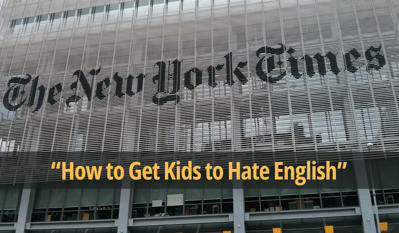
Rethinking High School Lit in the Age of STEM
An article in the New York Times sets itself apart with its importance.
1/9/20241 min read


The New York Times' 12/28 e-newsletter included an end-of-2023 list of best opinion pieces. The article “How to Get Kids to Hate English” written by Pamela Paul was included and for good reason — it’s a standout commentary.
(Coincidentally, Paul opens with a Columbia University study similar to the one cited in our own recent article, which tracked the declining number of college English majors.)
Whether you are considering English course options for a homeschooled student, steering your own student’s reading habits, or developing a high school English course, the article is worthwhile reading.
Paul’s provocatively titled column examines some of the current practices in teaching high school English, which appear to be killing a child’s natural love of stories and good literature.
She notes two trends associated with Common Core’s heavy STEM focus that she believes have done the most damage: overly analytical close readings of passages pulled from book pages and fitted into a table for meticulous highlighting/annotation and copious readings in nonfiction.
If we want students to love reading, we need to nurture personal connections by interrupting their media-saturated lives and giving them full-length books they can hold in their hands. We need to introduce them to the peaceful contentment that comes from curling up with a good book and encourage them to get so caught up in the story they excitedly race to the end.
Analytical close reading is important, but for a variety of reasons, students need access to the complete context for passages they study intently. Quite frankly, disembodied sentences stuffed into charts are demotivating for even voracious readers.
If we want students to participate in engaging, thought-provoking discussions that challenge them to wrestle with the difficult gray aspects of life, we need to introduce them to classic works of great literature that feature real human conflict, rather than pulling young adult novels from a trending list.
Yes, students may struggle with these texts, but it’s a worthy struggle, much like those they’ll encounter in real life.


